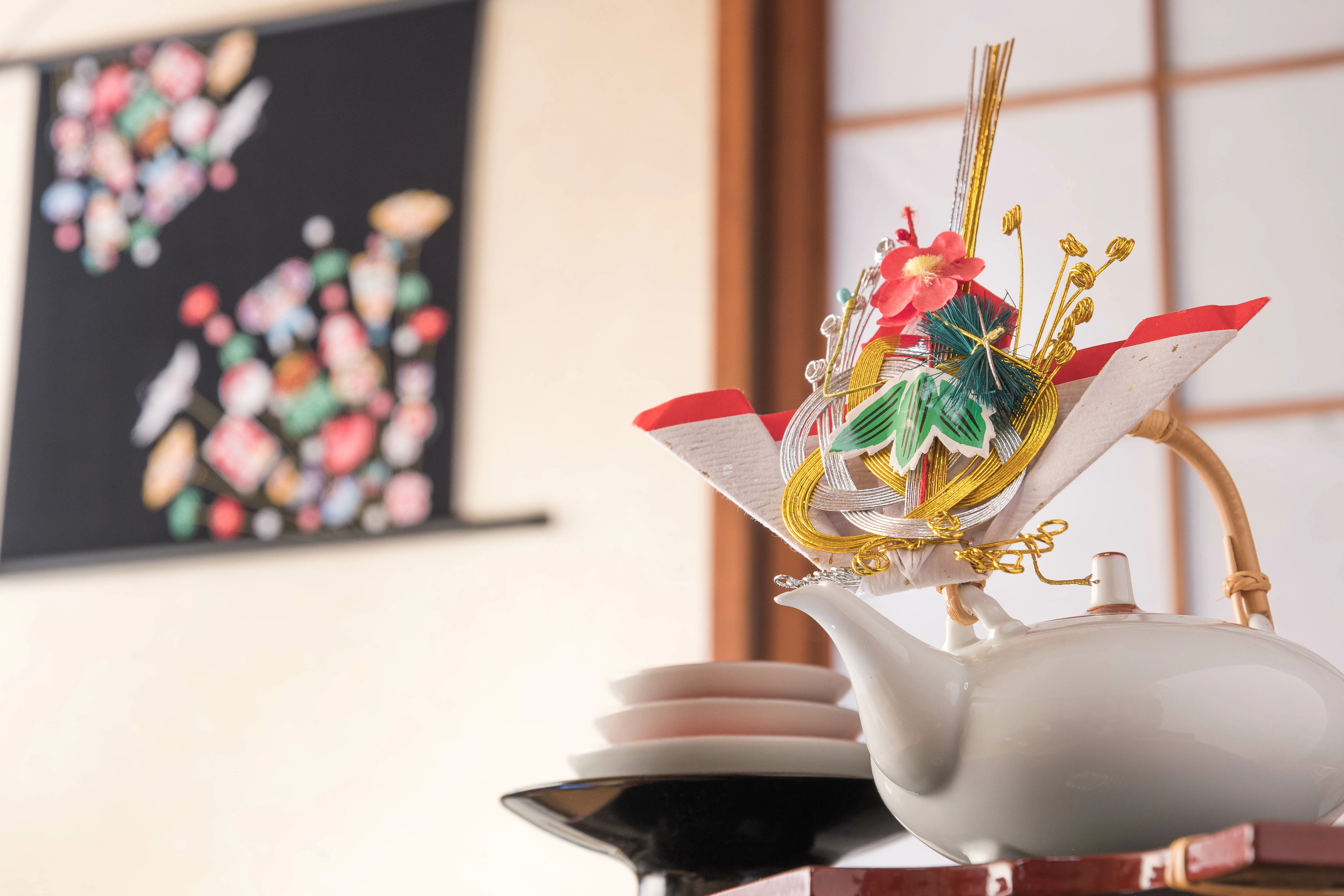
What is Mizuhiki? The "Heart" Conveyed Through Color and Knots
Mizuhiki are traditional Japanese decorative cords, originating from koyori—thin strips of washi (Japanese paper) twisted tightly together. Among them, the Iyo Mizuhiki we are introducing today accounts for a large majority of domestic production.
Its greatest feature is the unique tension and supple flexibility that comes from its washi paper base. The core of a mizuhiki cord is made of washi, around which dyed film or colored thread is wound. This gives it the strength of a wire despite being made of paper, allowing it to even stand on its own. It is this material property that makes such a wide range of expressions possible, from sharp, formal, linear shapes to graceful, flowing curves.
Mizuhiki also functions as a kind of communication tool, with symbolic meaning embedded in its colors and knots.
In terms of color, red-and-white or gold-and-silver combinations are used for celebrations (keiji), where red symbolizes joy and warding off evil, and white represents sanctity and purity. For mourning occasions (chōji) such as funerals, black-and-white or all-silver cords are used.
The shape of the knot also plays a crucial role. The chō-musubi (butterfly knot) can be easily untied and retied, so it is used for happy events that one would hope to see repeated, such as childbirth or school admissions. In contrast, the musubi-kiri (final knot) and awaji-musubi (Awaji knot) are tied in a way that is difficult to undo. They are reserved for one-time-only events that you would not wish to repeat, such as weddings, recovery from illness, or funerals.
Thus, mizuhiki is not just ornamentation, but a cultural symbol that conveys the sender's feelings and the nature of the occasion more powerfully than words alone.

This article is for members only.
Please register to read the rest of the article.
- Read members-only articles
and use text-to-speech. - Unlimited article favourites
and browsing history. - Attend members-only events.
- Get the latest information
with our email newsletter.

.png?w=400&fm=webp)

![[No.4]The Secret to the Expressive Techniques Only Living National Treasure Akihiro Maeta Can Create](https://images.microcms-assets.io/assets/1775a3633c8b428d9f011c6a758a8a5c/9c7bdfdde79840788867596b54617615/OGP4.JPG?w=400&fm=webp)

